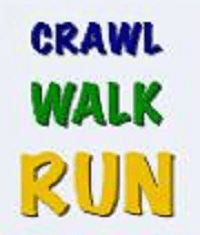 The inspiration for this article comes from Situational Awareness Matters member and Fire Chief, Todd Johnson, and the members of the Woodbury Fire Department. I was invited to observe a skills-based training evaluation that was more than a year in the making and involved over 100 practice exercises. The crews were dispatched to a structure fire. They arrived, in a realistic staggered timeline at a 40×40 building (a parks and recreation warming house) that was full of simulated smoke. The objectives were simple: Vent, enter, search, attack. Seems simple enough. So why did they perform over 100 practice exercise to get it right?
The inspiration for this article comes from Situational Awareness Matters member and Fire Chief, Todd Johnson, and the members of the Woodbury Fire Department. I was invited to observe a skills-based training evaluation that was more than a year in the making and involved over 100 practice exercises. The crews were dispatched to a structure fire. They arrived, in a realistic staggered timeline at a 40×40 building (a parks and recreation warming house) that was full of simulated smoke. The objectives were simple: Vent, enter, search, attack. Seems simple enough. So why did they perform over 100 practice exercise to get it right?
The answer lies with the Woodbury Fire Department Training Officer Chris Klein. During officer meetings, evaluations were being held on firefighter performance at structure fires and the officers were contemplating the introduction of positive pressure ventilation as a new firefighting strategy. The command team realizes there are a small number of critical success factors at a structure fire incident and these factors could be documented and firefighters could be trained for success using a list of critical tasks and repetitive training.
Crawl
The command team developed a checklist of critical tasks and used that to launch the new positive pressure ventilation training initiative. It started with handing the crews the checklist and having them walk and talk through each task in civilian clothes. This was a cognitive, hands-off exercise designed to get the crews familiar with the tasks on the list.
Walk
During subsequent drills, the crews donned their gear and performed the tasks with checklists in-hand. Read the item, perform the task. Read the next item, perform the task. This was done in a repetitive fashion until the entire task list could be performed without the benefit of the checklist.
Run
Finally, the crews got to perform the tasks at realistic simulations. Initially they used simulated smoke and fire, and eventually they were at the St. Paul Training Center where they burned Class A materials. When the stress level is raised, it is expected that some items on the list may be overlooked and some “old habits” might surface. The training evolutions provided opportunities to hit the pause button and fix problems in real-time.
The underlying objective of their training was to introduce the concept of positive pressure ventilation and dynamic risk assessment (essentially knowing when to be offensive and when to be defensive). Here is an interview with the training exercise developer, Captain Chris Klein.
Captain Klein Interview
Outcomes
On the day I observed their training, chief officers from the neighboring fire departments, Fire Chief Greg Malmquist from the Lake Elmo Fire Department, and Deputy Fire Chief Kevin Wold from the Oakdale Fire Department, served as evaluators. The evaluators were provided with the checklists and graded the performance of crews. The performances were not flawless but the crews did perform all the critical criteria on the checklists. Here are three videos of the evolutions:
Evolution 1
Evolution 2
Evolution 2 with Interior Smoke Conditions
Outside Evaluators
Using experienced chief officers from neighboring departments was a very smart decision for several reasons. First, internal personnel become desensitized to internal evaluators. When the evaluators are from the outside there is a heightened level of awareness about being watched and evaluated. Second, external evaluators are able to see things that internal evaluators may not see because they are so invested in their ways of doing things they cannot see their own shortcomings.
_____________________________________________________________
Now, for the first time ever, you can receive the content of this valuable safety programs in the NEW Situational Awareness Matters Virtual Academy… at your own pace – from home or while you are on-duty.
_____________________________________________________________
Share your comments on this article in the “Leave a Reply” box below. If you want to send me incident pictures, videos or have an idea you’d like me to research and write about, contact me. I really enjoy getting feedback and supportive messages from fellow first responders. It gives me the energy to work harder for you.
Thanks,

Email: Support@RichGasaway.com
Phone: 612-548-4424
Facebook Fan Page: www.facebook.com/SAMatters
Twitter: @SAMatters
LinkedIn: Rich Gasaway
YouTube: SAMattersTV
iTunes: SAMatters Radio

Rich and SA Subscribers:
I wanted to express my appreciation for the work Rich Gasaway has put into improving the fire service. Our training program was partially influenced by Rich’s research findings. We (Woodbury Fire, MN) enjoy sharing what has worked for us and welcome your thoughts. We could not have accomplished this without the creativity and hard work from our staff. Our intent is to build on what we have learned in 2012.
Stay Safe!
Chief Todd Johnson
Woodbury Fire, MN
Chief Johnson,
Thank you for the kind words of support. It have truly enjoyed working with your department and the training I had an opportunity to observe was amazing. Your companies did so many things well that I could write a dozen articles just on what I observed… and maybe I will! Keep on doing what you’re doing. You’re building a casualty resilient organization. ~ Rich
Change it’s not an option.its mendatory for skill development
Anchor Text: Change it’s not an option.its mendatory for skill development